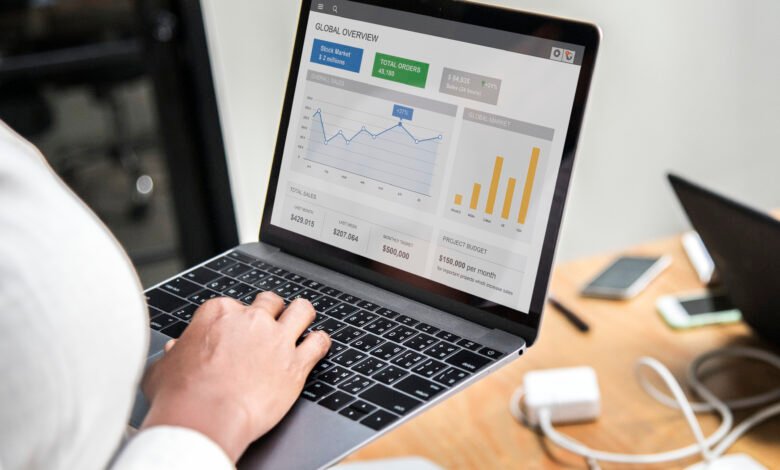How to Boost Website Traffic with Data-Driven Marketing: A Comprehensive Guide

In today’s digital landscape, driving consistent and high-quality traffic to your website is crucial for business growth. However, relying on guesswork or outdated strategies won’t cut it. Instead, businesses must adopt data-driven marketing—a method that leverages analytics, user behavior insights, and performance metrics to optimize campaigns and maximize traffic.
In this guide, we’ll explore how to boost website traffic using data-driven marketing, covering key strategies, tools, and best practices to help you attract more visitors and convert them into loyal customers.
1. Understanding Data-Driven Marketing
Data-driven marketing involves using customer data, analytics, and AI-powered insights to make informed decisions about marketing strategies. Instead of relying on assumptions, marketers analyze real-time data to:
- Identify high-performing channels
- Personalize user experiences
- Optimize content for better engagement
- Improve conversion rates
By leveraging data, businesses can reduce wasted ad spend, refine targeting, and drive more qualified traffic to their websites.
2. Key Steps to Boost Website Traffic with Data-Driven Marketing
Step 1: Set Clear Goals & KPIs
Before diving into data analysis, define your traffic-boosting objectives, such as:
- Increasing organic search traffic
- Improving social media referrals
- Boosting email click-through rates (CTR)
- Reducing bounce rates
Track KPIs like:
✔ Pageviews
✔ Unique visitors
✔ Average session duration
✔ Traffic sources
✔ Conversion rates
Step 2: Analyze Your Current Traffic Sources
Use Google Analytics, SEMrush, or Ahrefs to identify:
- Top-performing pages (high traffic, low bounce rate)
- Weak pages (high exit rates, low engagement)
- Best traffic sources (organic, paid, social, referral)
Actionable Insight:
If most traffic comes from organic search, double down on SEO. If social media drives engagement, invest in paid social ads.
Step 3: Leverage SEO with Data-Backed Keyword Research
SEO remains one of the most effective ways to drive organic traffic. Use tools like Ahrefs, Moz, or Google Keyword Planner to:
- Find high-volume, low-competition keywords
- Analyze competitor rankings
- Optimize on-page SEO (title tags, meta descriptions, headers)
Pro Tip:
Update old blog posts with new data, internal links, and better keywords to revive traffic.
Step 4: Optimize Content Based on User Behavior
Use heatmaps (Hotjar, Crazy Egg) and session recordings to understand how users interact with your site.
- Are visitors dropping off at a certain point?
- Is your CTA visible?
- Are pages loading slowly?
Improvement Ideas:
✔ A/B test headlines & CTAs
✔ Improve page load speed (Google PageSpeed Insights)
✔ Make content more scannable (bullet points, subheadings)
Step 5: Use Paid Ads with Precision Targeting
Data-driven paid advertising (Google Ads, Facebook Ads) allows you to:
- Retarget visitors who didn’t convert
- Use lookalike audiences to reach similar users
- Adjust bids based on conversion data
Example:
If Google Analytics shows that visitors from LinkedIn convert better, allocate more budget to LinkedIn ads.
Step 6: Personalize Email Marketing Campaigns
Segmented email campaigns have higher open and click rates. Use data to:
- Send behavior-based emails (e.g., cart abandonment emails)
- Personalize subject lines & content
- Test send times for maximum engagement
Tool Recommendation:
Mailchimp, HubSpot, or ActiveCampaign for automation & analytics.

Step 7: Enhance Social Media Strategy with Analytics
Track which posts drive the most traffic using:
- Facebook Insights
- Twitter Analytics
- LinkedIn Page Analytics
Data-Driven Social Media Tips:
✔ Post when your audience is most active
✔ Focus on high-performing content types (videos, infographics)
✔ Use UTM parameters to track traffic sources
Step 8: Implement Conversion Rate Optimization (CRO)
More traffic means nothing if visitors don’t convert. Use A/B testing (Optimizely, VWO) to:
- Test landing page designs
- Experiment with different CTAs
- Improve form completion rates
3. Essential Data-Driven Marketing Tools
Here are some must-have tools to boost traffic:
| Tool Category | Recommended Tools |
|---|---|
| Web Analytics | Google Analytics, Adobe Analytics |
| SEO & Keyword Research | Ahrefs, SEMrush, Moz |
| Heatmaps & User Behavior | Hotjar, Crazy Egg |
| Email Marketing | Mailchimp, HubSpot |
| A/B Testing | Optimizely, Google Optimize |
| Social Media Analytics | Sprout Social, Hootsuite |
4. Common Mistakes to Avoid
🚫 Ignoring mobile traffic (Over 50% of web traffic comes from mobile)
🚫 Not tracking ROI (Always measure which channels bring the best results)
🚫 Overlooking slow-loading pages (High bounce rates hurt rankings)
🚫 Failing to update old content (Refreshing posts can boost SEO traffic)
5. Final Thoughts
Data-driven marketing is the most reliable way to increase website traffic because it removes guesswork and focuses on what actually works. By analyzing user behavior, optimizing content, refining paid ads, and personalizing campaigns, businesses can attract more visitors, improve engagement, and drive conversions.
Start by auditing your current traffic, setting clear KPIs, and using the right tools to make data-backed decisions. Over time, you’ll see sustainable growth in website traffic and revenue.
Ready to Boost Your Traffic?
If you found this guide helpful, share it with your network and start implementing these strategies today! 🚀
Would you like a customized data-driven marketing plan for your business? Let’s discuss in the comments! 💬
